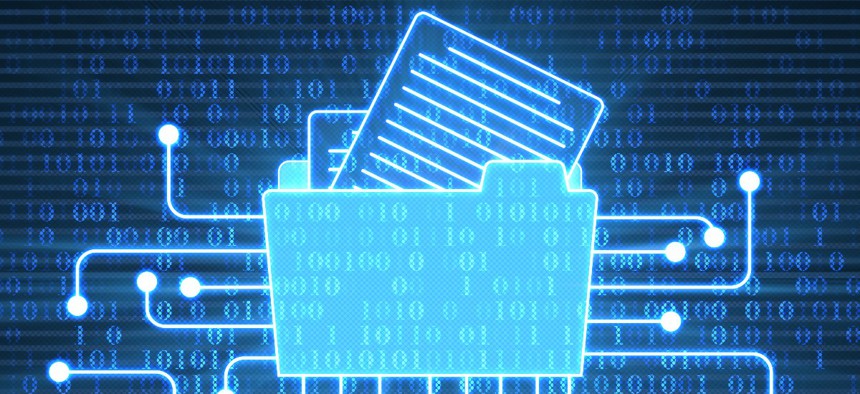Paper-Based Government Forms Cost Federal Agencies $37.8B

D3Damon/Getty Images
A report from the U.S. Chamber of Commerce underscored the environmental and consumer need for a digital government services modernization.
Work optimization and waste reduction are the two key factors behind the federal government’s need to update its digital services, with a new report from the Chamber of Commerce outlining the financial and operational benefits that come with modernization.
Published by the lobbying group’s Technology Engagement Center, the report, titled “Government Digitization: Transforming Government to Better Serve Americans,” debuted on Monday. It captures the volume of government forms federal agencies rely on to provide government services.
These government processes include drivers’ license and passport applications and renewals, social security card applications, and health record access, among others.
“Increased government digitization doesn’t just mean saved time and money, it also means providing greater accountability and access to underserved communities when it comes to utilizing government services,” U.S. Chamber Technology Engagement Center Vice President Jordan Crenshaw said in prepared remarks.
In total, there are 9,858 unique government forms used to access various services, and 106 billion such forms are processed annually, according to the report.
This culminates in about 10.5 billion hours American citizens spend filling out federal forms, which in turn use 2.25 million trees to create. Collecting and processing common government services using the current paper methods costs the federal government over $38.7 billion, based on statistics from June 2022.
The Department of Treasury stood out as having the highest number of unique forms at 1,838. Trailing the agency are the Department of Health and Human Services, the Department of Agriculture and the Department of Commerce.
“Digitization will enable government agencies to cut costs, increase efficiency and reduce waste every day,” the report said.
The Chamber encouraged Congress to conduct oversight examinations to see what paper processes can be digitized. A part of this process would ideally include lawmakers analyzing where to find funding to support IT modernization efforts.
Researchers at the Chamber told Nextgov that the digitization process could be supported by technologies like cloud computing, which enables better data streamlining and protection; blockchain softwares, which can track supply chain data; and artificial intelligence, which facilitates rapid data-based decision-making.
Experts within the Technology Engagement Center noted that this funding can potentially come from the Technology Modernization Fund, along with other avenues for similar modernization updates at the state level available via the American Rescue Plan.
NEXT STORY: Tech woes still trouble OPM, watchdog says






